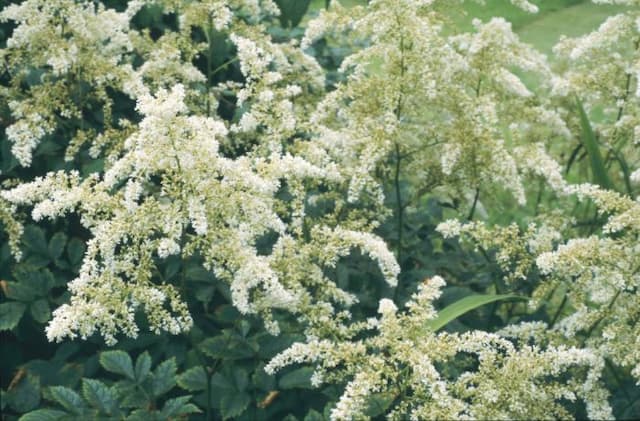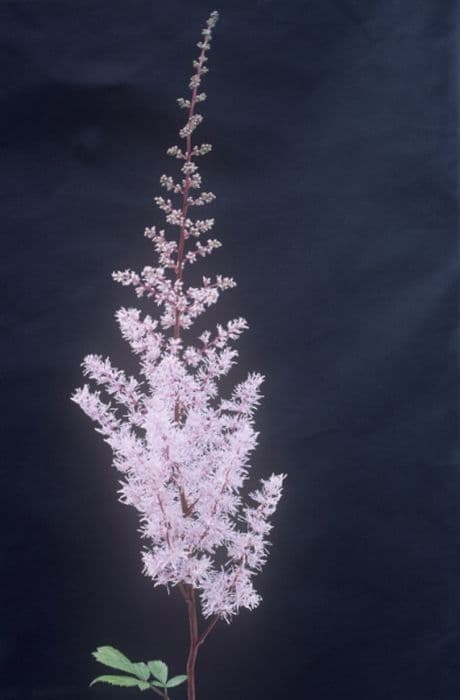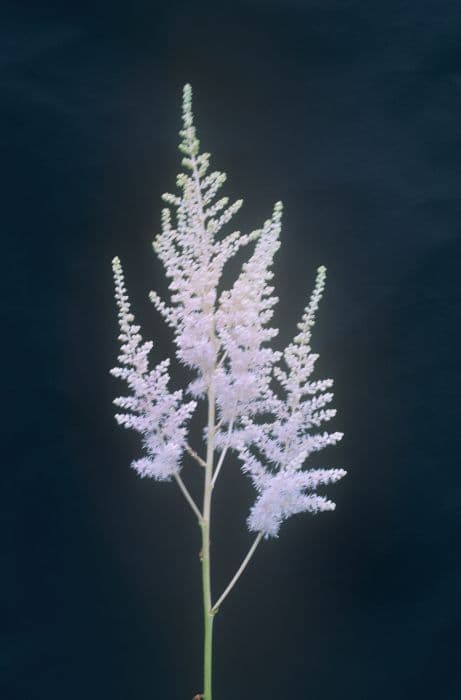Bergenia Bergenia 'Beethoven'

ABOUT
The Bergenia 'Beethoven' is recognized for its lush, glossy foliage that resembles oversized, leathery leaves. These leaves are typically a deep green color which can turn to a dramatic reddish-bronze in cooler weather, adding interest throughout the seasons. In spring, the plant blossoms with clusters of eye-catching pink flowers that rise above the foliage on sturdy stems, providing a lovely contrast against the dark leaves. The blooms are bell-shaped and can add a touch of romantic charm to any garden space. This plant's robust foliage also offers a dense, ground-covering habit, which makes it useful for filling in spaces and providing a lush, full look in landscaping. Its overall visual appeal comes from both its evergreen leaves and the seasonally changing colors that contribute to an ever-evolving display of beauty in a garden setting.
About this plant
 Names
NamesFamily
Saxifragaceae
Synonyms
Pigsqueak, Elephant's Ears, Heartleaf Bergenia, Leather Bergenia, Megasea
Common names
Bergenia 'Beethoven'
 Toxicity
ToxicityTo humans
Bergenia cordifolia, commonly known as heartleaf bergenia, is not typically considered toxic to humans. However, like with many plants, it is possible for sensitive individuals to experience mild irritation or an allergic reaction if they ingest parts of the plant or handle it without gloves. If such symptoms occur, they may include gastrointestinal discomfort or skin irritation upon contact. It is always advised to exercise caution and keep plants out of reach of children who might inadvertently ingest plant material.
To pets
Heartleaf bergenia is generally considered non-toxic to pets, including cats and dogs. However, ingestion of plant material could potentially result in mild gastrointestinal upset due to the novelty of the plant matter in the pet's diet. In the event that a pet displays unusual symptoms after ingesting the plant, it is recommended to consult with a veterinarian.
 Characteristics
CharacteristicsLife cycle
Perennials
Foliage type
Evergreen
Color of leaves
Green
Flower color
Pink
Height
1-2 feet (30-60 cm)
Spread
1-2 feet (30-60 cm)
Plant type
Herb
Hardiness zones
3
Native area
Asia
Benefits
 General Benefits
General Benefits- Attractive foliage: Bergenia 'Beethoven' offers year-round visual interest with its leathery, heart-shaped leaves that can change color throughout the seasons.
- Low maintenance: This plant is known for its ease of care, requiring minimal attention once established in an appropriate location.
- Drought tolerance: Once established, it can tolerate periods of dryness, making it suitable for xeriscaping or gardens with lower water availability.
- Cold hardy: Bergenia 'Beethoven' can withstand cold temperatures and is generally hardy in a range of climate zones.
- Ground cover: It can be used effectively as ground cover, helping to suppress weeds and reduce soil erosion in garden beds.
- Attracts pollinators: The flowers of Bergenia 'Beethoven' attract bees and butterflies, promoting biodiversity in the garden.
- Seasonal blooms: It produces clusters of flowers in spring, adding a splash of color to the landscape when many other plants are not yet in bloom.
- Deer and rabbit resistance: Bergenia 'Beethoven' is not favored by deer and rabbits, making it a good choice in gardens where these animals are a concern.
 Medical Properties
Medical Properties-
- Anti-inflammatory: Bergenia 'Beethoven' may have properties that help reduce inflammation in the body.
- Antimicrobial: The plant might possess antimicrobial properties, which could be effective against certain bacteria and fungi.
- Astringent: Bergenia 'Beethoven' could have astringent qualities, which may help in tightening tissues and reducing bleeding.
 Air-purifying Qualities
Air-purifying QualitiesThis plant is not specifically known for air purifying qualities.
 Other Uses
Other Uses- Bergenia leaves can be used as natural dye for textiles, providing a range of hues from greens to browns depending on the mordant used.
- The thick, waxy leaves can be used as makeshift bookmarks that won't damage book pages.
- This plant can be used as a natural pest deterrent in gardens due to its robust nature which is less appealing to some common garden pests.
- Dried Bergenia leaves can be utilized in creating eco-friendly crafts, such as biodegradable wreaths or floral arrangements.
- The large leaves can be used as a natural mulch to retain soil moisture and suppress weeds in garden beds.
- The robust nature of the Bergenia makes it suitable for soil erosion control in sloped gardens or banks.
- During the winter, the evergreen leaves provide visual interest and ground cover, reducing the barren look of gardens.
- Bergenia leaves might be used as a natural indicator for pH levels in the soil, changing color based on the soil's acidity or alkalinity.
- The plant's ability to thrive in shady areas makes it ideal for creating a lush underplanting under larger plants or trees.
- With their leathery texture, Bergenia leaves can be used in art projects as natural stencils or patterns for painting and drawing.
Interesting Facts
 Feng Shui
Feng ShuiThe plant Bergenia is not used in Feng Shui practice.
 Zodiac Sign Compitability
Zodiac Sign CompitabilityThe plant Bergenia is not used in astrology practice.
 Plant Symbolism
Plant Symbolism- Tenacity: Bergenia, commonly known as the Elephant's Ears due to its broad, thick leaves, symbolizes persistence and tenacity, as it thrives in challenging environments and holds up well in harsh winters.
- Endurance: The plant's ability to endure and bloom each spring, despite cold weather, reflects a symbolism of resilience and recovery.
- Adaptability: Elephant's Ears adapt well to a variety of soil conditions and light levels, representing flexibility and the ability to thrive in diverse settings.
- Protection: With its robust leaves, which were traditionally used for medicinal purposes, the plant can symbolize a shield or protection from harm.
- Harmony: The plant's tendency to grow in clumps that cover the ground can represent harmony and unity, as it creates a cohesive visual landscape.
 Water
WaterElephant's Ear should be watered when the top inch of soil feels dry to the touch, which typically means watering once a week. During the growing season, in spring and summer, you may need to water more frequently. Use room temperature water and pour it evenly around the base of the plant, avoiding the leaves to prevent leaf spot diseases. Provide enough water to moisten the soil thoroughly but not so much that it becomes soggy. Depending on the size of the pot and the environmental conditions, this often equates to around half a gallon every seven days.
 Light
LightElephant's Ear thrives best in partial shade to full shade. It can tolerate some morning sun, but intense afternoon sunlight should be avoided to prevent scorching of the leaves. A north-facing or east-facing position is often ideal, offering diffused natural light that suits this plant's preferences.
 Temperature
TemperatureElephant's Ear prefers a temperature range of 60 to 75 degrees Fahrenheit and should not be exposed to temperatures below 50 degrees Fahrenheit, as it is not frost-tolerant. Keeping the plant in a consistently warm environment without sudden temperature changes is ideal for its health.
 Pruning
PruningPruning Elephant's Ear is mainly done to remove dead or damaged leaves and to maintain its shape. Prune in early spring before new growth begins, cutting back any old, tattered leaves close to the base. This encourages fresh, vigorous growth. Deadheading spent flowers also helps to keep the plant looking neat.
 Cleaning
CleaningAs needed
 Soil
SoilBergenia 'Beethoven', commonly known as Pigsqueak, thrives in a soil mix consisting of equal parts garden soil, peat, and perlite to ensure good drainage and aeration. The ideal pH for Pigsqueak is slightly acidic to neutral, ranging from 5.5 to 7.0.
 Repotting
RepottingPigsqueak should be repotted every 2-3 years or when it has outgrown its current pot. This will ensure it has enough space to grow and replenish nutrients in the soil.
 Humidity & Misting
Humidity & MistingPigsqueak prefers average to slightly above average humidity levels but is quite adaptable and can tolerate a range of humidity conditions as long as it's well-watered and not in a completely arid environment.
 Suitable locations
Suitable locationsIndoor
Place Pigsqueak in bright, indirect light with moist soil.
Outdoor
Plant Pigsqueak in part shade to full sun, in moist, well-drained soil.
Hardiness zone
3-8 USDA
 Life cycle
Life cycleThe Bergenia 'Beethoven', commonly known as Beethoven Bergenia, begins its life cycle as a seed that, when sown, germinates in moist, well-drained soil in partial to full shade. Upon germination, the seedling emerges and begins to establish a robust root system, progressing to form a rosette of large, rounded leaves which are evergreen in mild winters. As it matures, the plant undergoes vegetative growth, expanding its clump of leathery foliage with the capability to spread by rhizomes. This perennial reaches maturity within a few years, at which point it produces tall flower stalks in early to mid-spring that bear dense clusters of pink flowers. After pollination, assuming conditions are favorable, the flowers will give way to seed capsules, allowing the plant to complete its reproductive cycle. Post-blooming, the plant enters a period of dormancy during the colder months, although in milder climates, it may retain its foliage throughout the year, beginning the cycle anew with the return of warmer spring temperatures.
 Propogation
PropogationPropogation time
Spring to early summer
The most popular method of propagating Bergenia 'Beethoven', commonly known as 'Beethoven' Bergenia, is by division. This process is best done in the early spring or autumn when the plant is not in active growth. To propagate by division, carefully dig up the entire clump and gently separate it into smaller sections, making sure each new section has a part of the crown and some attached root. Replant each division at the same soil depth as it was previously growing, spacing them about 12 inches (approximately 30 centimeters) apart to allow ample room for growth. Water the new divisions thoroughly after planting to help establish them in their new locations.









